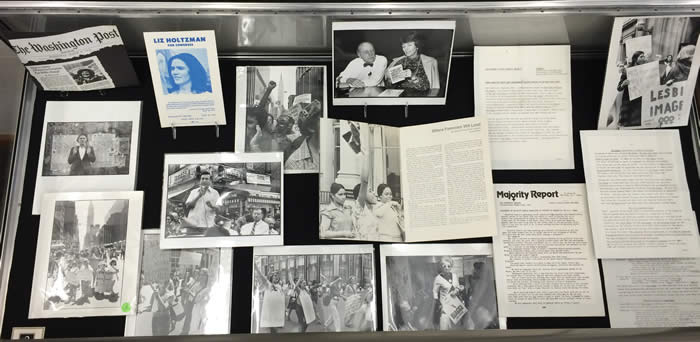Go to www.dianamarahenry.com Diana Mara Henry, dmh@dianamarahenry.com, 802-334-7054 Go to U Mass Diana Mara Henry Twentieth Century Photographer Collection Contact: Danielle Kovacs, dkovacs@library.umass.edu, 413-545-2784
Through the Photographer's Eyes: The Diana Mara Henry Collection
University of Massachusetts Amherst, W.E.B. Du Bois Library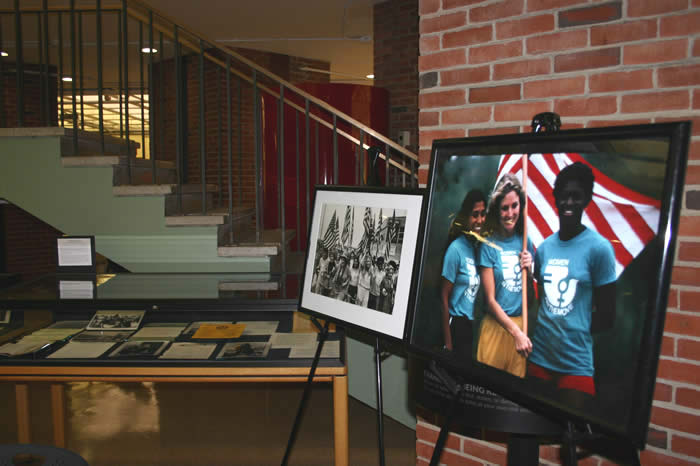
________________
Permaculture and food issues, opening of Epcot Center
http://www.dianamarahenry.com/InlovingmemoryofBillMollison-Mylifeinpermaculture.htm
Diana Mara Henry Twentieth Century Photographer Collection
Concurrent with Diana Mara Henry's purchase of 100 acres and an 1800 farmhouse on the banks of the Esopus river in Ulster Country, NY, began her investigation of food issues and the commercial monopoly and manipulation of agriculture. The Special Collection of her papers and photographs at the Du Bois Library includes notebooks from her attendance at Bill Mollison's first US course, three weeks at the Tree People in Los Angeles, his first books on Permaculture and many other early notices of teachings by his first disciples in the US. She also photographed him in color slides around New England in his first teaching forays there as well. Diana Mara Henry also attended the opening of Disney's Epcot Center in Florida, and recorded many interviews with its directors and those responsible for the "Kraft pavilion" exhibit: "Future Food." This became the title of her articles for Food Monitor and Southern Exposure. The photographs accompanying these articles are by Steven Borns, but her collection at the Du Bois includes many color slides she made of Epcot on opening day, as well. This case also includes photographs from her coverage of the Northeast Organic Farmers Association conference at Hampshire College ( with scythes ) and of David Winston, wild foods explorer, at "Our Garden," Diana's place on Ashokan Road, where Susun Weed held some of her women's herbal adventures.
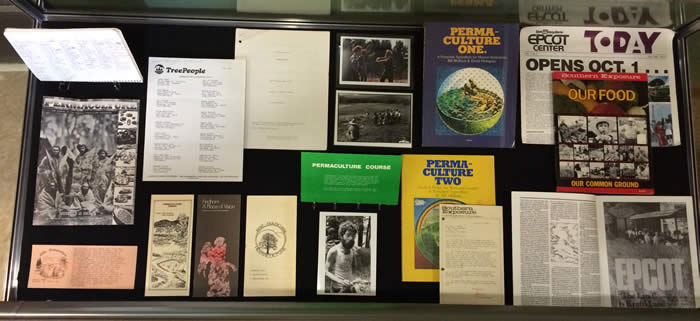
_________________________________________
The McGovern campaign and the Democratic National Convention, 1972
Diana Mara Henry Twentieth Century Photographer Collection
In early 1972, Diana Mara Henry, who had photographed the "Clean for Gene" and the Mcarthy campaign in 1968 for the Harvard Crimson, called the McGovern campaign and, introducing herself as a freelance photographer working "on spec," got on the press bus for his primary campaigns in New Hampshire and Massachusetts. Her photographs were then used for national and state campaign brochures and on tee-shirts. At the approach of the Democratic National Convention, she enbarked for Miami Beach, bringing her darkroom on the plane and setting it up in her hotel room. She met up with volunteer reporters for Reliable Source, the alternative newspaper run by Dick Tuck, a Democratic prankster. All were without credentials until the last night of the convention, when one of those reporters picked up a bunch of floor passes from a desk and Diana used her elbows to approach the podium for the acceptance speeches. Doing the 360-degree turnaround to scan the action, she photographed a young man with his mouth open, in thrall to the inspiration of George McGovern, later to become President: Bill Clinton. Seen on the podium with Mcgovern are Senaor Thomas Eagleton, Hubert Humphrey, and Edmund Muskie. Also photographed on the floor were delegates including Congressman Father Robert F. Drinan and welfare rights delegate Margaret Opie. After Senator Thomas Eagleton was forced out as McGovern's running mate, a "mini-convention" was held in Washington D.C., where Diana Mara Henry photographed his new vice-presidential running mate, Sargent Shriver, and, among the delegates, Reverend Jesse Jackson with C. Delores Tucker, the first black female Secretary of State, for the Commonwealth of Pennsylvania, where she instituted the first Commission on the Status of Women. Diana Mara Henry continued to photograph the campaign, including rallies in Bedford Stuyvesant with Congresswoman Shirley Chisholm and, on election day, drove people to vote and was a poll watcher in the Bronx where she took notes on irregularities in the voting.
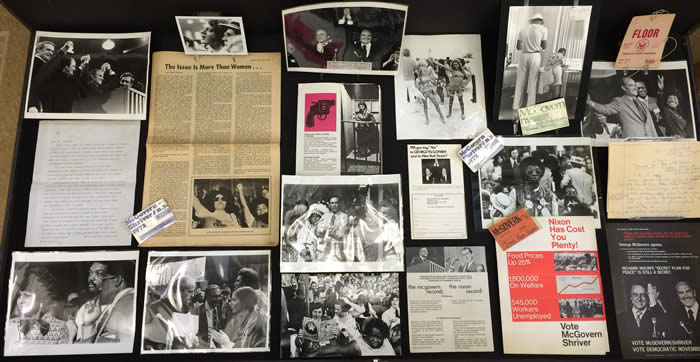
________________________________________
The New York State Women's Meeting and the First National Women's Conference
Diana Mara Henry Twentieth Century Photographer Collection
In 1977, Congresswoman Bella Abzug of NYC became the third chair of the National Commission on the Observance of International Women's Year, following the service of Jill Ruckleshaus and Betty Athanasakos, two Republican women who had served under President Gerald Ford, who had signed the legislation establishing it. Diana had been photographing Bella's campaigns since 1972 and Bella asked her to be the official photographer both for the NY State Women's Meeting, one of the 50 state meetings and additional meetings in the territories that preceded the national conference, and for the national conference itself, held November 17-19 in Houston, Texas. Jean Stapleton, who played the "stifled" Edith Bunker on the sitcom All in the Family, was a spokesperson for the NY State Meeting, as well as a Commissioner who took an active role in Houston. Melba Tolliver, "Accidental Anchorwoman," was photographed, pencil gripped between her teeth, writing her report of the New York State Meeting. The album of documentation is one of two and more that Diana Mara Henry collected. One page shown here are the remarks of then First Lady Rosalyn Carter and the rules of order from the Federal Register for this first, and so far the only, federally-funded national conference of, by, and about women.
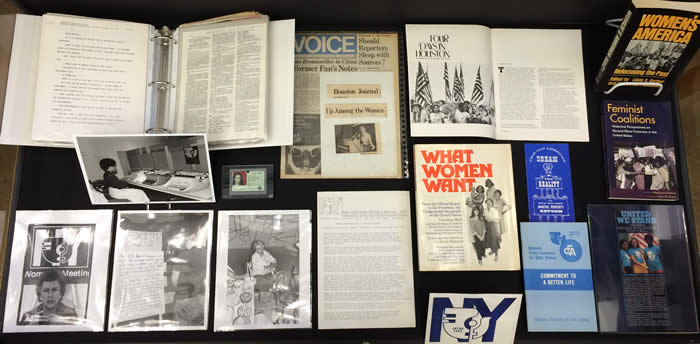
_________________________________________
On becoming a photographer
Diana Mara Henry Twentieth Century Photographer Collection
As her mother Edith Entratter Henry was a designer and her father Carl Henry had been a filmmaker at age 14 and created his own magazine at age 10, Diana was exposed to media - sometimes unwilling, as when her parents threw a birthday party for her that included all the children in the cast of The King and I. She received her first camera at age 3 - her father's home movies (in the Carl and Edith Entratter Henry Special Collection at the Du Bois Library) show her looking through her Ansco Pioneer the wrong way as she pranced by the water's edge at the Broadmoor, in Colorado. That is where her parents got the idea to have her taken under the wing of a French governess, Mademoiselle Agathe Durbano, photographed with them later at the Carlton in Cannes, and who remained a guardian angel to the end. When she was 15 Diana spent a month as the guest of Georges Simenon (author of the Maigret detective novels, among hundreds of other works.) In his inscription to her in one of his books he wrote: "To Diana Henry, who speaks a French that is more pure, and with a better accent, than my children..." Diana attended the Lycée Français de New York and was her class president and top student in high school. During college, she was a pulicity assistant for David Wolper's production, the film If It's Tuesday, This Must be Belgium, in the summer of 1968. Part of the class of 1969 at Harvard and Radcliffe, she was Photo Editor at the Harvard Crimson from her sophomore year onward, and also contributed articles during her senior year. The collection of press passes and her Rolodex are mementos of her professional career, as is the application form for the American Society of Magazine Photographers, signed by the great Berenice Abbott: "Endorsed enthusiastically!"
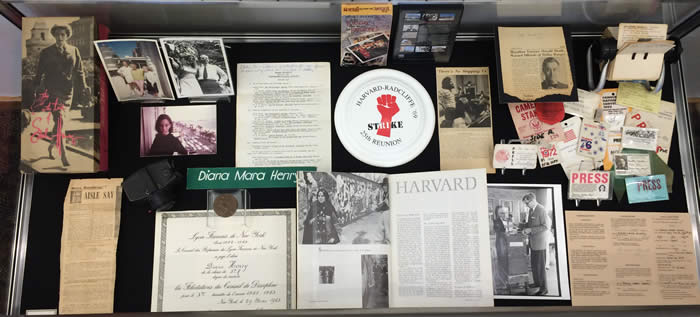
__________________________
The Women's Pentagon Action, November 16 and 17, 1980
Diana Mara Henry Twentieth Century Photographer Collection
Imagine enough people gathered together to surround the Pentagon, about a mile in circumference. That's at least how many women gathered in a protest action that included a preliminary march through Arlington National Cemetery, street theater, the puppets of Amy Trompetter, weaving across the entrances and confronting workers as they entered and left the Department of Defense headquarters. Bella Abzug was there; so were Grace Paley, Maya Angelou, and Danielle Notaro, who wrote her name in Diana 's little notebook so she could send her the photograph of her graffitti "rendered impotent by act of women" for which she was arrested, and duly photographed as well, by Diana as she lifted her handcuffed hands in the van to wave goodbye. As with many of her most historic events, Diana collected masses of documentation in the form of contact information for persons present, press releases, maps, coordinating plans, and mission statements (in Spanish as well.) The photographs of this event and others in the exhibit taken in color can be seen on the Credo collection listings that include as many as 800 color slides by Diana Mara Henry, a small part of the images residing in this collection.
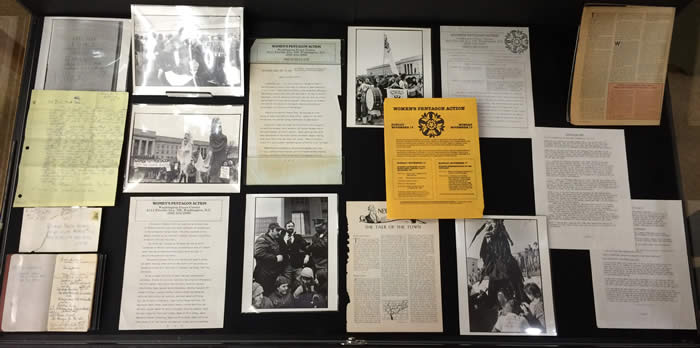
___________________________
Vietnam Veterans Against the War
Diana Mara Henry Twentieth Century Photographer Collection
Diana's first job after college was as a researcher for the NBC News documentary, "From Here to the Seventies." She then was hired as a general assignment reporter for the Staten Island Advance, a Newhouse newspaper. Her first Sunday feature assignment, to interview Vietnam veteran Ed Murphy, stretched to a three-article series. Thus began more than a decade of journalism about the veterans of that tragic war and a lifelong friendship with Ed and, after she photographed their wedding in 1972, with his wife Linda Geary. On exhibit here are photographs that only she took of the Memorial Day weekend action by the Vietnam Vetrans Against the War in Lexington and Concord, followed by a rally on Boston Common in 1971. In 1980, she collected extensive documentation as well as photographing in color and in black and white the hunger strike at the VA hospital in Westwood, California, including Ron Kovic, author of Born on the Fourth of July, seen in the wheelchair. He later wrote to her in thanks for her work: "Your photos are beautiful and represent such a powerful and passionate time in American history. I believe these photos will last and many years from now they will be looked at and studied just as Mathew Brady's classic and haunting Civil war photos are today….Thank you for being a part of history."
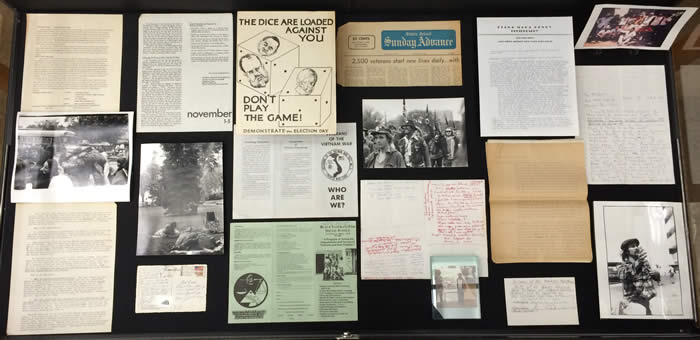
_____________________________________________
Professional life
Diana Mara Henry Twentieth Century Photographer Collection
Many of the requests for Diana Mara Henry's photographs now come from filmmakers: in the pipeline, films about Nora Ephron, Sarabeth Levine, the equal rights amendment....
Diana Mara Henry was on staff at the International Center of Photography from the time it began in 1974 to 1979, teaching black and white photography in its Community Workshop program, which Cornell Capa asked her to create, and Cibachrome printing from Kodachrome. Her star pupil, David Kreindler, took a photo of her there showing her portfolio to the great Ernst Haas. At the same time, she was very involved in the creation of the Alice Austen House Museum. Her article about it for the Staten Island Advance in 1970 introduced her to the work of an original whose career and character feel like a close match to her own. Like Alice, Diana traveled to Europe where she photographed her school chum's life as a jockey and trainer around the town of Pompadour, in the Limousin, France, as well as the denizens and landscapes of La France Profonde. Many photographs in color exist also in this collection's archives and can be seen online. Her only solo exhibit in NYC, at the Overseas Press Club, presented this work and Malcolm Forbes' castle lifestyle at Balleroy, Normandy. Another foray was to Plains, GA to photograph the kudzu invasion, the Carter family worm farm, good ole boys, and Jimmy Carter's mother watching the election results. Incentivized by attending the Master's program in Visual Arts Administration under the leadership of Dale McConathy, Diana applied for and received grants to photograph One-Room Schools of Ulster Country, (a NY State Council on the Arts Individual Artist's Grant) and a 40-day Artists in Residence grant in the Westchester Public Schools (from the NY Foundation for the Arts, still her fiscal sponsor.) Her exhibit, Libel, currently shown on the 25th floor of the Du Bois Library as part of this exhibit, was created for Gustave Harrow's class at NYU on Art and the Law. Among her professional memberships were the American Society of Picture Professionals, for whose newsletter she wrote an article on where to find the work of great women photographers in special collections. Her new book, A Life in Photography, follows on the heels of Women on the Move, published in 2012. Diana Mara Henry was cajoled out of retirement by Ken Burns in 2007 to shoot the cover of him and his editor, Paul Barnes, for Editors Guild magazine, her last professional shooting assignment.
_____________________________________
Glamorous NYC, 1973 - 1983
Diana Mara Henry Twentieth Century Photographer Collection
Beside photographing for Mt. Sinai Hospital's fundraiser, a NYC premiere of On Golden Pond with Jane Fonda and Tom Hayden, from one party to another, dressed just slightly less fancy than the party-goers, and her business cards always at the ready, Diana Mara Henry was invited to photograph for Malcolm Forbes, his children, their friends such as Jeannette Watson Sanger, and various publicists who were, or became, friends. That is how she came to photograph Susan Watson smoking a cigar at Kathy Johnson's birthday party at the 21 Club, Olive Watson going down on a banana at the Hayden Planetarium - a party that also was recorded by Stan Mack in his Real Life Funnies, where Diana and publicist Tom Jones appear in the last frame, waiting to hail a cab home: "Bella Abzug didn't come."- "I thought Liz Holtzman would come for sure." Also Salvador Dali and Ultraviolet at the Planetarium, Jackie O at the Metropolitan Museum for Gil Wintering/Olivetti, Fashion Week at the Plaza for [MORE] and self-assignments: at the MOMA, a retrospective for Lillian Gish, Charlotte Moorman playing cello in a tent, and "Fashion as Fantasy," a fundraiser for Fountain House at Rizzoli with "avant-garde fashions" by Karl Lagerfeld, and many more.... The Forbes Castle at Balleroy was the scene photographed two years in a row for Forbes balloon meets, including Malcolm's sponsored China and Pakistani balloons, Fran Lebowitz, son Robert and .............Other fun times: recording the Lower East Side Art scene in 1984-1985, Jane Fonda touting her film Nine to Five to the Women Office Workers and the glitterati, Larry Rivers playing the sax at his opening at the Jewish Museum, the flower power wedding of Ed Murphy and Linda Geary, and an assignment to record the debut of Cookie Monster with creator Frank Oz, for the Ad Council.
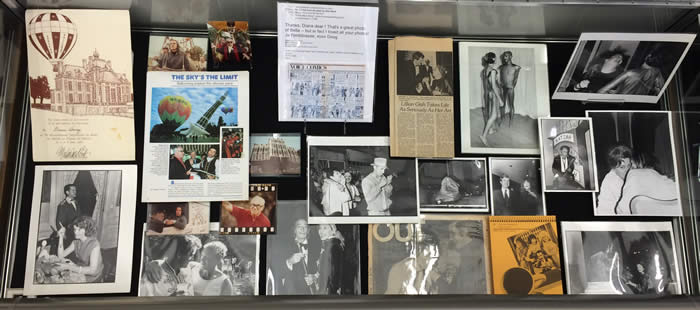
________________________________________________
NYC Politics
Diana Mara Henry Twentieth Century Photographer Collection
Diana Mara Henry's first paid assignment was in 1972, to photograph for the Primary campaign of Elizabeth Holtzman. To this day, Liz credits the photograph she took on the Brooklyn Bridge for her victory. Diana's first photograph of Bella Abzug was taken that same year and made into posters and this flyer, beginning a mutually rewarding relationship that lasted to the end of Bella's political career. Also photographed: Allard Lowenstein from his 1972 Congressional campaign to his funeral, here with Congressman Herman Badillo campaigning for him, and his fans waving (accompanying the article "Where Feminism will Lead" by Lucy Komisar; attorney William Kunstler in front of Marxist tracts across from his home on Gay Street; union and ERA demonstrations at the time of the Democratic National Convention at Madison Square Garden; a groovy fan of Mario Biaggi, and Helen Caldicott presenting her book, Nuclear Madness, at a symposium at Mt. Sinai Hospital, with Dr. Thomas Chalmers, its President, by her side. Collected with her images of a 1974 demonstration at the NY Times to protest its ignoring the term MS (which they adopted in 1986) are press releases and statements Diana Mara Henry collected (as was her custom to preserve ephemera relating to most of her assignments) about the newspaper's sexist abuses from Majority Report and a coalition of the National Organization for Women, the Manhattan Women's Political Caucus, Women's Equity Action League, National Black Feminists Organization, Women's Media Alliance, and the Feminist Party.
